
The Echinothurioida are an order of sea urchins in the class Echinoidea. Echinothurioids are distinguished from other sea urchins by the combination of a flexible test and hollow spines. The membrane around the mouth contains only simple plates, in contrast to the more complex mouth parts of their close relatives, the Diadematoida. They are nearly all deepsea dwellers.

Henricia is a large genus of slender-armed sea stars belonging to the family Echinasteridae. It contains about fifty species.

Cidaridae is a family of sea urchins in the order Cidaroida.

Spatangus is a genus of heart urchins in the Spatangidae family. The genus is synonymous with the previously recognised genera Prospatangus Lambert, 1902 and Spatagus. There are nine recognised species. The type species is Spatangus purpureus Müller, 1776 by subsequent designation.

Echinidae is a family of sea urchins in the order Camarodonta. Members of the family are found in the Atlantic Ocean and the Antarctic.
Aporocidaris antarctica is a species of sea urchin of the family Ctenocidaridae. Their armour is covered with spines. It is placed in the genus Aporocidaris and lives in the sea. Aporocidaris antarctica was first scientifically described in 1909 by Ole Theodor Jensen Mortensen, Danish professor. It has a circum-Antarctic distribution.

Eucidaris is a genus of cidaroid sea urchins known as slate pencil urchins. They are characterised by a moderately thick test, a usually monocyclic apical disc, perforate and non-crenulate tubercles and nearly straight ambulacra with horizontal pore pairs. The primary spines are few and widely spaced, stout with blunt flat tips and beaded ornamentation and the secondary spines are short and apressed. They originated in the Miocene and extant members of the genus are found in the tropical Indo-Pacific Ocean, East Pacific, Atlantic Ocean and Caribbean Sea.

Chaetodiadema is a genus of sea urchins of the Family Diadematidae. Their armour is covered with spines.
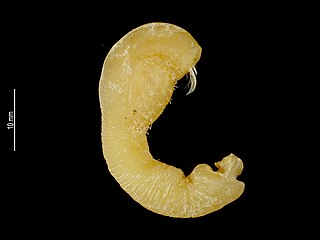
Heteralepas is a genus of goose barnacles in the family Heteralepadidae. which was first described in 1907 by Henry Augustus Pilsbry.

Araeosoma is a genus of deep-sea sea urchins in the family Echinothuriidae.
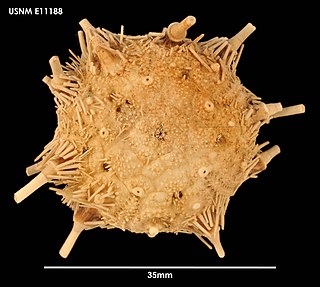
Aporocidaris is a genus of sea urchins in the family Ctenocidaridae. Several species are found in deep water in circum-Antarctic locations.
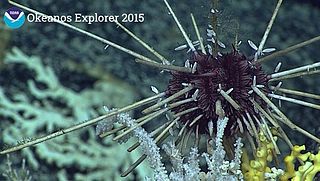
Histocidaris is a genus of sea urchins in the family Histocidaridae. Some species are known from the fossil record.

Pteraster is a genus of sea stars in the family Pterasteridae.

Goniocidaris is a genus of sea urchins (Echinoidea) in the family Cidaridae and typical of the subfamily Goniocidarinae. Extant species are mostly found in Indo-Pacific seas, often living at depth.

Abatus is a genus of sea urchins belonging to the family Schizasteridae.

Fibularia is a genus of echinoderms belonging to the family Fibulariidae. The genus has almost a cosmopolitan distribution.
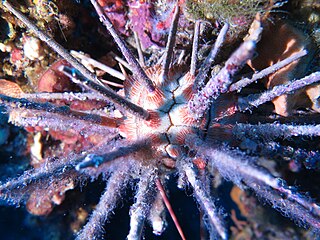
Stylocidaris is a genus of echinoderms belonging to the family Cidaridae.

Ctenocidaridae is a family of echinoderms belonging to the order Cidaroida.
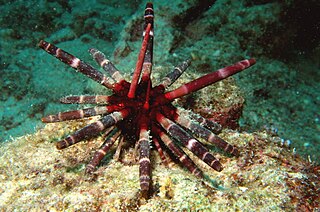
Phyllacanthus is a genus of echinoderms belonging to the family Cidaridae.

Stereocidaris is a genus of echinoderm belonging to the family Cidaridae.




















